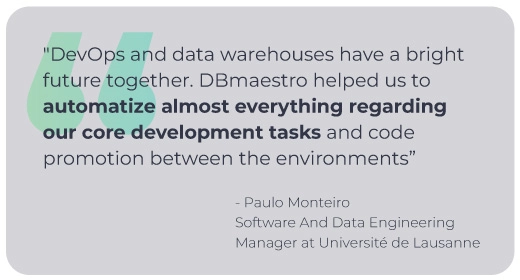Continuous Integration and Continuous Delivery (CI/CD) are indispensable tools for ensuring efficient and reliable software deployment. However, establishing end-to-end CI/CD pipelines is not without its challenges. This blog post explores the common obstacles faced during the implementation of CI/CD pipelines and offers practical solutions to overcome them, ensuring smooth and successful DevOps practices.
What You Will Learn
- Understanding the challenges in establishing end-to-end CI/CD pipelines
- Strategies for managing legacy systems
- Ensuring security and compliance within CI/CD workflows
- Scaling and performance optimization techniques
- Tool integration and compatibility solutions
- Practical solutions to overcome CI/CD pipeline challenges
Common Challenges in Establishing End-to-End CI/CD Pipelines
Managing Legacy Systems
Legacy systems often pose significant challenges when integrating CI/CD pipelines. These outdated systems can lack the flexibility and compatibility required for modern CI/CD processes, making it difficult to achieve seamless integration. Many organizations find themselves grappling with the decision of whether to replace or integrate these systems. However, replacing legacy systems can be costly and time-consuming, potentially disrupting business operations.
One effective strategy to manage legacy systems is through containerization and microservices. Containerization involves encapsulating applications into containers, allowing them to run consistently across different computing environments. This approach provides a layer of abstraction, enabling legacy applications to be integrated into modern CI/CD workflows without significant modifications. Microservices, on the other hand, break down applications into smaller, independent services that can be developed, deployed, and scaled individually. This modular approach allows organizations to modernize their systems incrementally, reducing the risk of disruption while enhancing flexibility and scalability.

Ensuring Security and Compliance
Maintaining security and compliance in an automated CI/CD environment is a critical challenge. The fast-paced nature of CI/CD can lead to security oversights, making it essential to integrate security measures throughout the pipeline. Traditional security practices often involve manual checks and approvals, which can slow down the development process. To address this, organizations should adopt a DevSecOps approach, which integrates security practices into every stage of the CI/CD pipeline.
Automated security testing tools can be used to perform static and dynamic analysis, vulnerability scanning, and compliance checks. These tools help identify security vulnerabilities early in the development process, reducing the risk of security breaches. Additionally, incorporating security gates within the pipeline ensures that only code that meets security standards is promoted to the next stage. By embedding security into the CI/CD process, organizations can achieve a balance between speed and security, ensuring that applications are both reliable and secure.
Scaling and Performance Optimization
As businesses grow, their CI/CD pipelines must scale to handle increased workloads. A common challenge is ensuring that the pipeline can support this growth without compromising performance. Scalability issues can lead to longer build times, increased resource consumption, and reduced efficiency, ultimately impacting the overall development process.
To achieve scalability, organizations should design their pipelines with flexibility in mind. Cloud-based solutions offer a scalable infrastructure that can dynamically adjust to changing workloads, providing the necessary resources to support growth. Distributed architectures, such as microservices, further enhance scalability by allowing individual components to be scaled independently based on demand.
Performance optimization is another critical aspect of scaling CI/CD pipelines. Continuous monitoring of pipeline performance helps identify bottlenecks and areas for improvement. By analyzing metrics such as build times, resource utilization, and error rates, organizations can optimize their pipelines for better performance. Implementing caching mechanisms, parallel processing, and load balancing are some strategies that can enhance pipeline efficiency and reduce build times.
Tool Integration and Compatibility
Integrating various CI/CD tools and ensuring their compatibility is a complex task. Different teams within an organization may use different tools, leading to integration challenges and potential conflicts. This can result in fragmented workflows, increased complexity, and reduced efficiency.
To overcome these challenges, organizations should select tools with extensive integration capabilities and ensure that they are compatible with existing systems. Tools with robust API support and community plugins offer greater flexibility and adaptability to changing toolsets. Additionally, adopting a standardized toolchain across teams can streamline processes and improve collaboration.
Organizations should also consider using orchestration platforms that provide a unified interface for managing CI/CD pipelines. These platforms offer pre-built integrations with popular tools, simplifying the integration process and reducing the risk of compatibility issues. By ensuring seamless integration and compatibility, organizations can create a cohesive CI/CD environment that supports efficient development and deployment.
Pro Tip: Choose CI/CD tools that offer robust API support and community plugins to enhance integration capabilities.
Practical Solutions to Overcome CI/CD Pipeline Challenges
Implementing Incremental Changes
To reduce risk and manage CI/CD challenges effectively, organizations should implement incremental changes. This approach allows for gradual improvements and minimizes the impact of potential issues. By breaking down changes into smaller, manageable parts, teams can focus on specific areas, making it easier to identify and resolve problems.
Implementing incremental changes also fosters a culture of continuous improvement. Teams can experiment with new features, gather feedback, and make adjustments based on real-world usage. This iterative approach encourages innovation and allows organizations to respond quickly to changing market demands.
Continuous Monitoring and Feedback Loops
Continuous monitoring is essential for identifying issues promptly within the CI/CD pipeline. Establishing feedback loops ensures that any problems are quickly addressed, maintaining the pipeline’s effectiveness. Organizations should implement monitoring tools that provide real-time insights into application performance and user experience, fostering a culture of continuous improvement.
Feedback loops enable teams to gather valuable insights from stakeholders, including developers, testers, and end-users. By actively seeking feedback and incorporating it into the development process, organizations can identify areas for improvement and make data-driven decisions. This iterative feedback loop ensures that the CI/CD pipeline remains aligned with business goals and delivers high-quality software.
Fostering Collaboration Between Teams
Collaboration between development, operations, and security teams is crucial for a streamlined CI/CD process. Organizations should encourage cross-functional collaboration by promoting open communication and shared goals. Regular meetings and collaborative tools can enhance teamwork, ensuring that all teams are aligned and working towards common objectives.
DevOps practices emphasize breaking down silos and fostering a culture of collaboration. By encouraging cross-functional teams to work together, organizations can improve efficiency, reduce handoffs, and accelerate the delivery of software. Collaborative tools, such as chat platforms, version control systems, and project management software, facilitate communication and enable teams to work seamlessly across different locations and time zones.
Pro Tip: Encourage regular cross-team workshops to share knowledge and improve collaboration.
Key Takeaways
- Legacy systems can be integrated into CI/CD pipelines through containerization and microservices.
- Security and compliance should be integrated throughout the CI/CD process using a DevSecOps approach.
- Design pipelines with scalability in mind to handle increased workloads effectively.
- Select tools with robust integration capabilities to ensure compatibility across the pipeline.
Related Tools and Resources
To assist in overcoming CI/CD pipeline challenges, consider the following essential tools:
- Jenkins: A widely used open-source automation server that supports building, deploying, and automating any project.
- GitLab CI/CD: An integrated CI/CD solution that offers robust features for automation and monitoring.
- Docker: A platform for developing, shipping, and running applications in containers, facilitating CI/CD processes.

Conclusion
While establishing end-to-end CI/CD pipelines presents several challenges, understanding and addressing these obstacles is crucial for successful DevOps practices. By implementing the strategies and solutions outlined in this post, organizations can overcome these challenges and ensure a smooth and efficient CI/CD pipeline implementation.






